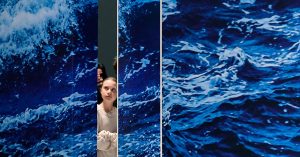When you buy something using the retail links in our stories, we may earn a small affiliate commission. Read more about how this works.
Burning Man bills itself as the biggest “Leave No Trace” event in the world. This means that after revelers have dismantled the geodesic domes, giant duckies, and steampunk ships that form their temporary city in Nevada, they get down on their hands and knees to scour the white alkaline sand for every last cigarette butt and sequin. But in the end, 80,000 people still leave a mark.
“Sure, by October, there’s no trash left on the surface of the Black Rock Desert,” says Michael Light. “But boy, are there a lot of traces.”
Those traces are glaringly visible in Lake Lahontan/Lake Bonneville, Light’s latest book in his long-term aerial survey Some Dry Space: An Inhabited West. It captures the monumental city grid etched into the Nevada desert, as well as spiraling vehicle tracks cut into Utah’s salt flats. They echo other lines humans have made in recent centuries—wagon trails blazed across the North American prairie, Apollo mission rover paths plowed through moon dust.
“They’re quite exuberant and beautiful from the air,” Light says.
The landscapes sit in the Great Basin, a roughly 200,000-square-mile region between the Sierra Nevadas and the Western Rockies that writer William L. Fox calls “the major void in our continental imagination.” It’s a unique environment formed millions of years ago when mountain streams drained into Pleistocene pluvial lakes—the biggest being Lahontan and Bonneville. Those lakes eventually receded, leaving mud flats, sagebrush slopes, and other alien-looking terrain. Visiting in the late 1800s, the naturalist John Muir described it as “smooth lake-like ground” that “sweeps on indefinitely, growing more and more dim in the glowing sunshine.” He found “no singing water, no green sod, no moist nook to rest in.”



